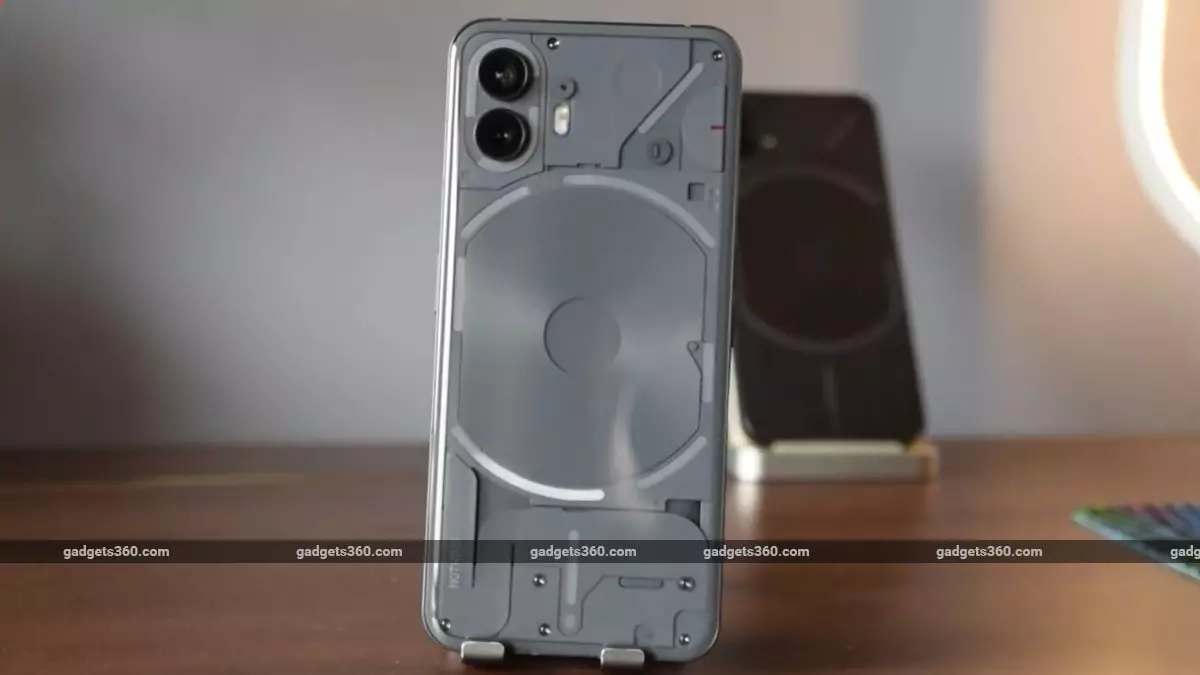The Nothing Phone 3 is poised to arrive with high expectations, promoted as the UK company’s “first true flagship smartphone.” This declaration isn’t just marketing fluff—it reflects the brand’s shift from niche appeal to mainstream ambition. Nothing has carved out a cult following with its minimalist design ethos and innovative lighting features, yet the leap to flagship territory invariably raises stakes. The Phone 3’s rollout, synchronized for global and Indian markets on July 1, is more than a product launch—it’s a test of whether Nothing can sustain its momentum while dramatically elevating its price point.
Price Hike: Innovation or Inflation?
At roughly Rs. 90,000 (GBP 800), the Nothing Phone 3 nearly doubles the launch price of its predecessor, the Phone 2. For a brand still solidifying its foothold, this steep climb is risky. While flagship prices have been trending upwards industry-wide, such a jump demands extraordinary justification through standout features or unparalleled user experience. Nothing leans heavily on promises of a Snapdragon 8s Gen 4 chipset—which boasts significant CPU, GPU, and NPU improvements. But raw performance gains alone might not assuage consumers who remember the Phone 2 as a sharp, affordable alternative amid their premium choices. The brand’s gamble is clear: will loyalists embrace this upscale pivot, or will they feel alienated as Nothing attempts to escape the shadow of mid-range competitors?
Innovating With the Glyph Matrix—Enough to Captivate?
The last iteration’s signature Glyph Interface garnered attention for turning smartphone notifications into a tactile, visual experience with customizable lights on the phone’s rear. The new Glyph Matrix aims to build on this DNA with an updated design element, although the company has been coy on specifics. Innovation in user interaction remains a compelling area, offering a rare touchpoint of distinctiveness in a sea of visually repetitive devices. Yet, subtle refinements to lighting features, no matter how clever, might struggle to be seen as a genuine upgrade, especially when overshadowed by hardware specification wars. Without a truly transformative user experience, such design flourishes risk being dismissed as gimmicks.
Hardware Power Versus Lasting Value
The reported 6.7-inch LTPO OLED display with a 120Hz refresh rate and a 1.5K resolution aligns the Nothing Phone 3 with current flagship norms but does not leapfrog competitors pushing similar or better specs. The triple-camera setup, led by a promising 50-megapixel periscope telephoto lens offering 3x optical zoom, signals Nothing’s intent to compete in photography ambitiously. Equally notable is the reported provision of five years of Android OS updates and seven years of security patches—a progressive commitment that enhances the device’s longevity and appeals to environmentally conscious consumers.
The inclusion of a 5,150mAh battery with 100W wired fast charging, alongside wireless and reverse wireless charging, positions the Phone 3 well in user convenience and endurance. These features, while essential, have become table stakes in premium smartphones. Thus, the question remains whether the phone’s overall package will deliver a compelling reason to justify its premium price tag.
The Challenge of Balancing Ascendancy and Accessibility
What emerges from this anticipation is a broader narrative about Nothing’s brand identity and growth strategy. The Phone 3’s launch illustrates the tension between climbing the premium ladder and retaining the accessibility that sparked early enthusiasm. Nothing is undeniably investing in robust hardware, longer software support, and enhanced design elements, but it risks alienating the price-conscious audience who appreciated its affordable disruption.
This dilemma spotlights a fundamental challenge for emerging brands aspiring to break free from the mid-range crowd: the balancing act between delivering headline-grabbing specs and cultivating enduring consumer trust. The Phone 3, with its ambitious specs and steep pricing, could both embolden the brand or expose it to disillusionment. It remains to be seen if Nothing’s move signals maturity or hubris in a saturated, fiercely competitive market.



Leave a Reply